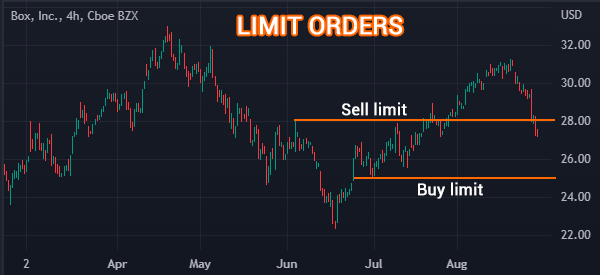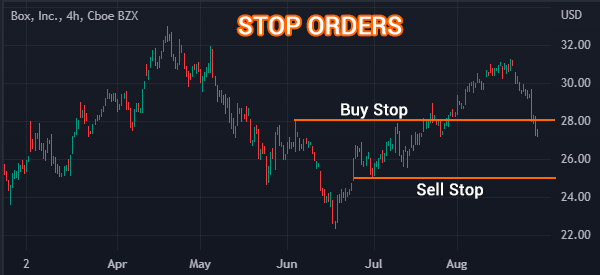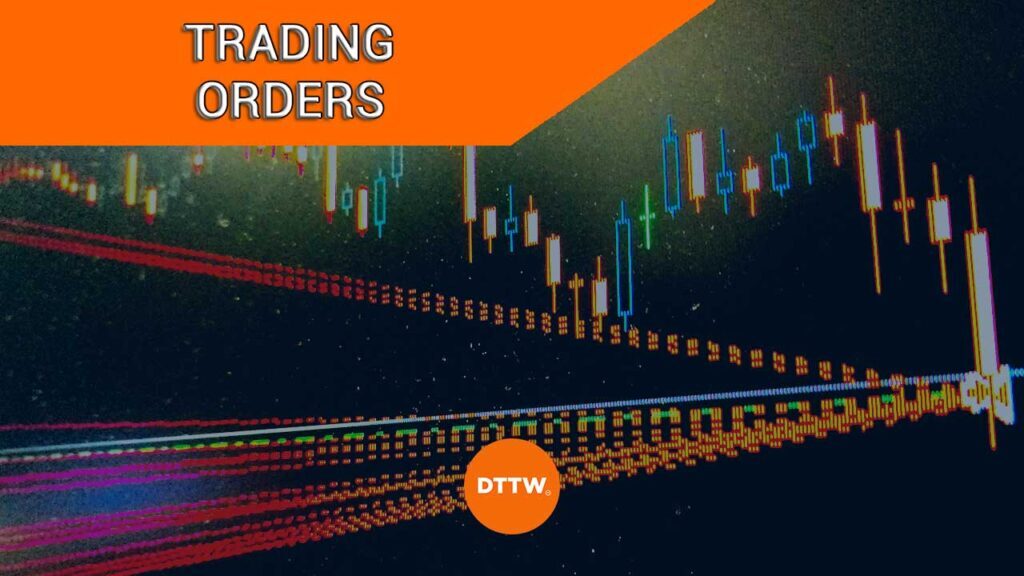Orders are some of the most basic things that a trader and investor should know. Having a good understanding of them will make you a better trader in several ways. When placed well, trading orders allow you to improve your performance in terms of profits and risk management.
In this article, we will look at the important types of orders in the market. We will also assess some of the best strategies to use when placing an order.
Table of Contents
What are orders in trading?
An order is a simple process of executing a trade in the market. It refers to when you place a buy or sell trade of a particular asset like a stock, currency, or commodity.
The concept behind orders is relatively simple. For example, when you go to a shop and buy something, you simply give the seller cash and you receive the item. Similarly, in the financial market, when you execute an order, you are simply giving the broker your cash, and then you receive the asset in exchange.
The only difference is that you do it electronically through a broker by pressing a button to buy or sell an asset.
Why you need to know about trading orders
There are several reasons why you need to know more about orders as a day trader. First, by understanding the different types of orders, you will know the best order types to fill in certain market conditions.
Second, you will know the right procedure of executing a trade. At times, many people lose money by placing a buy trade when they were supposed to open a sell trade.
Third, knowing more about trading orders will introduce you to the concept of slippage. Slippage happens when an order is executed at a different price than the one a trader placed.
Types of trading orders
Broadly, there are two main types of orders in the market: market order and pending orders.
A market order refers to a situation where a trader opens a trade that is executed at the current market price. For example, if Apple shares are trading at $100, a market order will execute this trade at the exact price right away.
A pending order, on the other hand, refers to orders that are conditional. For example, if Apple shares are trading at $100 and you expect a bullish signal to emerge when it rises to $103, you can place a trade that will be executed when it moves to that level.
Market order
A market order is the most common type of orders in the financial market. It refers to a situation where a trade is executed at the present price. For example, if you start your trading platform and then buy a stock, then that is a market order since it will be executed right away.
While market orders are the most common, they have their challenges. For example, they are often rife with slippage and they demand that a trader stays in his computer screen for more time.
Pending orders
A pending order, as stated above, refers to a situation where you tell the broker to either buy or sell an asset when its price reaches a certain level.
These trades are therefore conditional since they will be only executed when a certain condition is reached. There are two main types of pending orders: limit and stop.
Limit and Stop orders
What are limit orders?
A limit order is a type of trade that directs a broker to execute a trade above or below the current price. A buy limit is when you tell the broker to execute a bullish trade below the current price.
For example, in the chart below, we see that Box shares are trading at $27.20. If you believe that the shares will drop to $25 and then resume the bullish trend, you can place a buy limit there. In this case, the buy trade will only be executed if the trade moves to $25.
On the other hand, if you expect it to rise to $28 and then resume the bearish trend, you can place a sell-limit order there.

What are stop orders?
Stop orders, on the other hand, are order types that appear in the direction of the trade. For example, if a stock is trading at $10, you could place a sell-stop at $9 if you expect it to keep falling.
Alternatively, you could place a buy-stop at $11, if you expect it to keep rising. A good example of this is shown in the chart below.

Trailing stop order
Another type of trading order that you can place is known as the trailing stop order. This is an order that is similar to a market order. But, it has a trailing stop loss that moves with the trade to limit potential losses.
For example, if you bought a stock at $10 and you expect it to rise to $15, you can have a trailing stop. In this case, if the stock then nosedives, the original profits will be captured.
Benefits of pending orders
Trading experts believe that pending orders are usually better than market orders for several reasons.
Protect from sharp movements
First, you can use pending orders as a trading strategy, especially during earnings. For example, assume that a stock is trading at $10 before it publishes its earnings in extended hours. In most cases, the stock will either open sharply higher or lower.
Therefore, you can place a buy-stop at $11 and a sell-stop at $9. In this case, you will make money regardless of the direction it opens.
Related » How to trade During the Earning Season?
Avoid slippage
Second, pending orders are good in fighting slippage, which happens when a trade is executed at a different price. For example, you can place a buy trade at $10 and the broker executes it at $10.1.
For investors, this phenomenon does not exist, because their intention is to hold the asset for months or years. For a day trader-or a scalper-every moment can make the difference between generating profits or not.
Save up your time!
Third, with pending orders, you don’t need to spend all your time staring at your computer. You can place the trade and then go to do your normal activities.
In this case, the trade will be executed if the conditions are met.
Summary
In this article, we have looked at some of the most important things that traders should be aware about.
We have assessed the different types of trading orders and the main benefits of using pending orders like buy and sell stop and buy and sell limit.
External useful resources
- What are the types of orders in the stock market? – Quora





